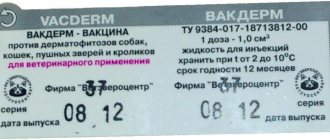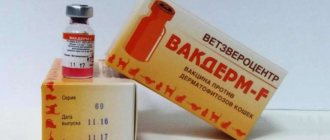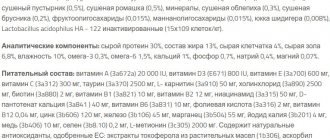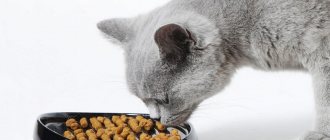| Article verified by a practicing veterinarian |
Such a delicate problem as constipation is common in cats.
And if it is problematic to control regular bowel movements in an animal walking on the street, then in domestic ponytails it is enough to pay attention to the regularity of cleaning the cat's litter box. In addition to obvious problems with stool, there are situations when it is necessary to empty the animal’s intestines for medical reasons, for example, before performing a colonoscopy (examination of the large intestine using an endoscope).
Whatever the reason for the procedure, it is important that it is prescribed by a veterinarian . Self-treatment of an animal for constipation is unacceptable, since problems with stool can be caused by serious disorders in the digestive organs. And an accurate diagnosis will be made after examining and examining the cat.
This delicate problem is often solved with the help of Vaseline oil. Let's figure out how to properly give Vaseline oil to a cat.
Up
general description
Vaseline oil is a laxative with an oily consistency. The drug is available in liquid form and is intended for oral or external use. External use – as a lubricant for a catheter or an enema when providing emergency care to cats.
The oil is colorless, odorless and tasteless; it contains no carcinogens, mutagens or components that can provoke an allergic reaction. The active ingredient is liquid paraffin. It relieves constipation, is completely eliminated from the body and is absolutely safe provided that the dosage is strictly followed.
When should it be used?
In veterinary practice, purified petroleum jelly is widely used for constipation in cats. This is a product of natural origin, it comes to pharmacies in the form of an oily solution obtained during the production of paraffin. The pharmaceutical product has no aroma, it is transparent and tasteless. To be sure that an enema with the product will definitely work, the cat owner needs to know what symptoms are typical for constipation. It can be diagnosed by the following signs:
- The animal does not go to the tray for more than 2 days and refuses to eat.
- Moves little.
- There is vomiting, unpleasant odor from the mouth and a bloated abdomen.
If such symptoms occur, veterinarians recommend giving your cat Vaseline oil. If assistance is not provided in a timely manner, the cat may experience poisoning of the body, and sometimes intestinal rupture. If you do not give medicine against constipation, the functioning of internal organs will deteriorate and the load on the heart, kidneys and liver will increase.
The main causes of constipation are:
Among the reasons that cause constipation in cats is poor nutrition and, as a result, obesity.
- stressful situations;
- incorrectly composed diet;
- lack of fluid;
- accumulation of hair in the intestines;
- foreign body in the stomach;
- infectious diseases;
- helminthiases;
- metabolic disease;
- diabetes;
- obesity;
- urolithiasis disease;
- old age;
- pregnancy.
If your cat is constipated, you need to give her Vaseline oil or give her an enema. When the drug enters the body, it envelops the walls of the gastrointestinal tract with a thin film. Vaseline thins stool, which is easy to pass. The film covering the mucosa protects the tract from products formed during decay. The product is not absorbed and does not allow toxic elements to be absorbed.
Operating principle
Healthy pets have regular bowel movements - 1-2 times a day. Lack of stool for 2-3 days is the first sign of difficult bowel movements. Excessive liquid stool or feces in the form of dry balls are also classified as constipation and a signal to give your cat petroleum jelly.
Liquid feces in large quantities indicate intestinal atony (emptying only after overflow), dry feces in small quantities indicate disturbances in peristalsis.
The longer waste products are not excreted, the more fluid from them is absorbed into the mucous membranes. This injures the mucous membranes, causes congestion, and poisons the body.
Intoxication is fraught for the animal:
- disturbances in the functioning of the liver, kidneys, heart;
- allergic reactions;
- deterioration in the condition of the coat.
Dull fur, itching, skin rashes are the first signs by which owners can visually identify internal problems. Chronic constipation is fraught with other serious complications, so you should give your cat Vaseline oil at the first signs described above.
It has an enveloping effect, like a lubricant for the intestinal walls. Due to this, intestinal motility improves, and the hard feces accumulated in it soften. The drug mechanically stimulates intestinal contraction and the removal of feces, toxins and other waste products from the body. Accumulated waste is removed from the body gently, without pain, injury or stress for the animal.
For the treatment and prevention of constipation, veterinarians recommend:
- Pay attention to food . If your pet has a predisposition to the disease, then you should use dry food marked i/d, designed specifically for cats with digestive problems and diseases of the gastrointestinal tract.
- Give more liquid . Make sure there is always water in the bowl. If your pet refuses to drink, read our material with an analysis of the reasons.
- It is undesirable to use a mixed type of food (industrial feed and food from the table), especially since most cats do not digest lactose.
- When treating constipation, it is advisable to replace dry food with wet food .
- Add fiber , which is found in plant-based foods. There is a special commercial cat food with high fiber content, Royal Canin Fiber Response, which is used to treat constipation.
- Regular massages of your pet's tummy.
- Use gentle laxatives : lactusan, duphalac, prelax, sodium sulfate. Medicines must be prescribed by a veterinarian.
If it is not possible to use one of the above methods using petroleum jelly, you can mix olive oil into your food in moderation.
It smells delicious, and animals willingly lick it off. The decision to take olive oil should also be discussed with your veterinarian. Up
Indications for use
The product is recommended as an emergency aid for constipation in cats, but it should not be abused so as not to cause addiction in the animal.
Vaseline oil is sometimes prescribed as a laxative after taking deworming medications and removing hairballs and bodyballs. In this case, the dosage is calculated by the veterinarian, taking into account the weight and height of the pet.
Your doctor may recommend an enema to quickly cleanse your colon. The enema is prescribed:
- in studies of the gastrointestinal tract of cats;
- before planned operations;
- for severe constipation;
- to prevent the formation of fecal stones, and if they are present, for gentle splitting and painless removal.
Signs of constipation
No bowel movement. The pet does not go to the toilet for several days.
The desire to go to the toilet. The cat sits on the tray and tries to go to the toilet, but nothing works. In this case, the animal may meow and feel pain in the abdomen.
Hard belly. On palpation, the intestines are full of solid particles of feces.
Anxiety. The cat feels pain and discomfort.
Danger of constipation
- Intoxication of the body. During the digestion process, harmful and unnecessary substances are released from the rectum. The most dangerous of them are protein breakdown products, which, in the absence of excretion of feces, are absorbed through the intestinal walls into the blood and lead to intoxication of the body.
- Internal bleeding. Hard or dehydrated stool as it passes through the intestines can disrupt the integrity of the intestinal mucosa, which causes damage to blood vessels and the development of bleeding.
- Inflammatory processes. Injuries to the mucous membrane can cause the development of an inflammatory process.
Mode of application
Vaseline oil is administered to a cat on an empty stomach; it is better to give it in the morning. How to ensure that the medicine gets inside? It will be easier for two people – the owner and the assistant.
The drug is drawn up in advance into a disposable syringe without a needle. It is preferable to use a thin syringe - it is easier to insert into the oral cavity.
The owner should calm the animal by stroking it. At this time, the assistant must fix the animal’s head and open the jaw slightly so that a syringe can be inserted into the side gap between the teeth.
The contents are injected strictly onto the root of the tongue so that the pet swallows it and does not spit it out. Manipulations must be carried out quickly, without stopping stroking the cat.
The dose of Vaseline oil for constipation depends on the purpose, method of administration, weight and age of the cat and is indicated in the instructions for use:
- For prevention purposes, 0.5 ml of the drug is administered per kg of weight.
- For medicinal purposes – 1 ml per kg of weight.
- For kittens weighing less than 1 kg, the product is dripped onto the withers at the rate of 1-3 drops.
As a rule, veterinary clinics prescribe 5-10 ml of medication per appointment. The result should be 4-5 hours after taking the oil. If there is no result, it is necessary to re-give the drug in an amount of 5 ml. The maximum permissible daily dose for an adult cat is 20 ml.
Kittens should not be given an additional dose. If an enema or oil in its pure form does not work, you should immediately contact a veterinarian.
Many experts pay attention to the individual reaction of the animal’s body, so there are no standard schemes for using petroleum jelly. In one case, it promotes bowel movement from the first dose, in the other, 2-3 doses are required over 15-18 hours, after which the release of feces will begin.
In any case, it should not be exceeded so as not to cause side effects and unwanted reactions of the body. Laxatives will not work if constipation is caused by a serious medical condition, such as volvulus or intestinal obstruction. These pathologies are treated surgically, and other drugs are prescribed during the recovery period.
Description of Vaseline oil and how it works
global $ads_google; //data-ad-slot=”2475549904″ $ads_google = empty($ads_google) ? false : true; ?> if ($ads_google == false) {?>
$ads_google = true; ?> } ?>
Vaseline oil is safe for cats if given according to directions. You should study the issue of such assistance to your pet more carefully so that the treatment brings only positive results.
We are talking about a completely safe product that has neither color nor taste. It doesn't even smell. As a rule, its absorption leads to the fact that it leaves the body unchanged.
The Latin name of the product sounds like Oleum vaseline, which literally translates as vaseline oil. Chemically, it is a derivative of kerosene, which is obtained by purifying hydrocarbons after its production. Of course, the raw materials are filtered most carefully, freed from all impurities and become clear as water.
For cats, this is a surefire remedy for constipation. Its action is based on lubricating all parts of the intestines, covering them with a thin film, at the same time it helps to strengthen motility.
Using oil allows you to naturally remove hard feces without causing pain to your pet. The oil film will prevent feces from getting stuck or injuring the intestines, and toxins and fluid loss from food lumps are blocked.
The drug will not penetrate into the blood, and there is no allergy to it either. But hairballs will also more easily move towards the exit of the digestive tract.
The mild laxative effect quickly brings the pet's stool back to normal, calming both the sufferer and his owner.
You should not use the remedy for constipation often, as it can cause addiction and a decrease in intestinal tone.
Side effects
Side effects are observed in exceptional cases, if the drug is used in accordance with the instructions and not often. Abuse of the drug, exceeding the permissible concentration, non-compliance with the dosage regimen prescribed by the veterinarian is fraught with:
- formation of nodes in the intestines;
- spontaneous release of oily fecal fluid from the anus of the animal;
- dehydration;
- lack of fat-soluble vitamins.
The owner should monitor the pet's well-being after taking the medicine. If there is vomiting, lethargy, refusal to eat, or other changes in behavior, you should show it to your doctor. It is possible that the cat is intolerant to the drug.
Contraindications
Contraindications to taking petroleum jelly are:
- pregnancy;
- intestinal bleeding, volvulus;
- infectious pathologies of internal organs;
- feverish conditions;
- heat;
- stomach ulcer;
- pregnancy;
- individual intolerance.
Frequent use is also a contraindication, as it reduces intestinal tone and makes it difficult for cats to have independent bowel movements.
Features of the drug
Oil (another name is liquid paraffin) is a chemical compound of purified hydrocarbons, which are products of kerosene processing. The resulting raw materials undergo a thorough cleaning and filtration process.
The oil does not decompose inside the body and is not absorbed into soft tissues. It almost always helps in the first days of difficult bowel movements.
Operating principle
The oil normalizes intestinal motility. The mechanism of influence is to softly envelop the intestinal walls and dilute the stool. In addition to eliminating stagnant processes in the intestines, it has a protective effect on the mucous membranes, preventing damage to the intestinal walls and the occurrence of cracks.
The product forms a conditional barrier between the mucous membranes of the intestinal walls and waste by-products. Helps stop the absorption of toxic substances, blocks the absorption of water from incoming food.
The oil facilitates the easy passage of not only excrement, but also hairballs through the intestines.
Indications and contraindications
There is only one indication for the use of the drug - constipation in a pet. The reasons for the occurrence of this condition are different: constant consumption of dry food without observing the drinking regime, the entry of foreign objects into the intestines, the development of oncological tumors and a number of other diseases that disrupt the functioning of the body.
But this product is recommended for one-time use only.
It is contraindicated to be used for systematic treatment, since over time the therapeutic effect may decrease or be completely absent. If a one-time use of the oil gives a positive result, but the cat has frequent constipation, this is a sign of a deviation from the norm. Therefore, it is necessary to consult a doctor to determine the causes of the pathological condition of the intestines and treat them first.
The oil has a number of contraindications, in the presence of which it is strictly prohibited to use it:
- peptic ulcer of the digestive tract;
- pathologies of viral and infectious origin;
- a febrile state, which is accompanied by an increase in temperature;
- pregnancy;
- dysfunction of the gastrointestinal tract;
- tendency to allergic reactions to the components of the product.
To use the product correctly and not harm the animal, you must first consult with a veterinarian.
Owner reviews
Irina, owner of a 5-year-old cat:
“We treated our cat with this medicine. They gave it exactly according to the instructions - for the first time they injected 2 syringes of 5 cubic meters each. The color of the product is transparent - this was not visible in the dark bottle. There is no smell, so the cat reacted surprisingly calmly. 4.5 hours passed and I didn’t see any results. Another 5 ml was reintroduced. And just a couple of hours later, some kind of liquid began to come out of the cat. After another 1-1.5 hours, the first feces appeared - very hard, in small quantities. And at night, everything else finally came out. So the oil works."
Agatha, owner of a three-year-old Sphynx:
“Our cat has sensitive digestion, if any component in the food is not suitable, constipation is guaranteed. We have already used this drug a couple of times on the advice of a veterinarian. Pour 2 ml into the cat’s throat with a syringe - in two passes. After 4-5 hours he calmly defecates on the potty.”
Aloe as a laxative
Aloe leaves are known to relieve inflammation and promote healing of minor wounds and burns. In fact, the leaves of this plant are also effective in cases of constipation.
It is best to use the plant in oil or gel form, but you can try making a remedy from the juice. Remember that aloe oil contains a high concentration of active substances. You will need:
- Two tablespoons of pure aloe oil or one glass of plant juice.
- You need to mix two tablespoons of oil with fruit juice and drink the finished product in the morning on an empty stomach. The products can be taken twice a day for a week.











